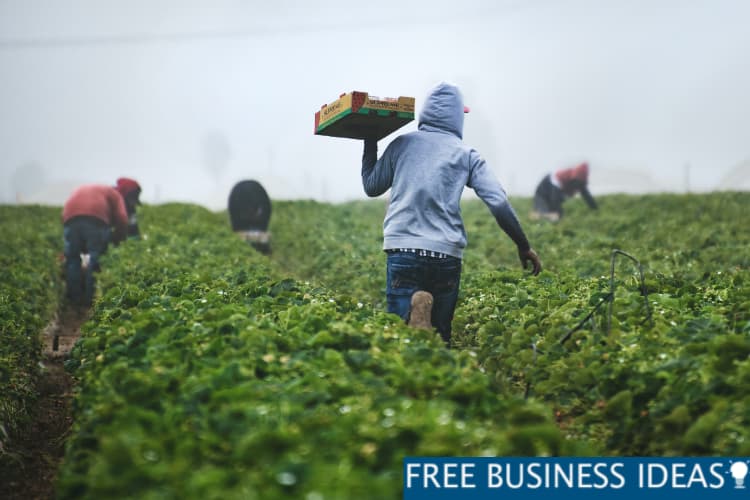Before starting any sort of crop production, all farmers evaluate factors including the crop to be sown, tillage method, type of fertilization, market and pricing of the product, and so on. Furthermore, only having proper soil, climate, and season are insufficient to produce a high-quality product.
It necessitates a series of processes that must be followed by the farmers or anyone who wants to engage in farming. Also known as agricultural practices, it is needed to be followed closely by everyone trying to harvest the best produce.
Hence, listed below are the steps that the people need to follow closely in order to produce the best agricultural output:
Soil preparation
Once you have decided on the type of soil which is best suited for your desired crop, the next important step in the agricultural process involves the preparation of the soil. You have to determine the type of soil that is available so that you can make the required changes by adding organic matter and other chemicals to make it perfect for growing a variety of crops.
Soil preparation transforms a productive agricultural land into perfect soil and best prepares it for cultivation. Farmers can improve their yields by manuring and eradicating weeds at regular intervals and frequencies. The basic phases in soil preparation include ploughing, levelling, and seeding.
Sowing
Sowing plays an important role in farming. Once the soil is loosened and ploughed, the good, disease-free and pure quality seeds are selected and sown into the soil. The basis of any successful harvest is timely and efficient sowing.
People need to be up to date with seasonal forecasting information as it is likely to help them with information on sowing with particular reference to timing, machinery, environmental conditions and paddock preparation.
Manuring
Crops need nutrients to grow and produce yield. As a result, a consistent supply of nutrients is required by the crops. Manuring is the process of providing nutritious supplements that can be either natural which includes manure or chemical which includes fertilizers, insecticides, pesticides, etc.
With the advancements of technology, farmers can now buy manure, fertilizers, pesticides, and insecticides online in India along with any other farming requirements. Where manure is a byproduct of a plant and animal breakdown, fertilizers on the other hand are commercially produced chemical compounds composed of plant nutrients. Apart from providing the crops with the required amount of nutrients, fertilizers also replenish the fertility of the soil.
Irrigation
Irrigating crops is an agricultural activity that has been practised for thousands of years. In arid places and during seasons of below-average rainfall, irrigation aids in the growth of agricultural crops, the maintenance of landscapes, and the vegetation of damaged soils.
Irrigation also has other uses in crop production, including frost protection, suppressing weed growth in grain fields and preventing soil consolidation. For the past many years, farmers have employed various techniques to irrigate their land. One of the irrigation techniques that are popularly used worldwide includes sprinkler irrigation.
In this type of irrigation, water is supplied to one or more central locations in the field and dispersed by overhead high-pressure sprinklers or guns. Other forms of irrigation that are widely employed by farmers are drip irrigation, subsurface textile irrigation, micro-irrigation, etc.
Weeding
It is impossible to overstate the importance of weeding around the newly planted crops. Weeds compete in the soil for light, nutrients, and, most significantly, water and also provide protection for bark-gnawing rats as well as larger, climbing weeds. Since weeds also absorb nutrients from the soil, they disrupt the main crop as they are unable to acquire the necessary nourishment from the soil.
Weeds can also be pulled out using a trowel (khurpa). Diseases and pests are spread by weeds. That is why weed control must be done in a timely manner.
Harvesting
The purpose of proper harvesting is to increase crop production while minimising crop losses and degradation in quality. Harvesting can be done either manually with hands or knives or automatically using rippers, combine harvesters, or other machines.
Harvest timing, technique, length, and postharvest processes should all be followed regardless of the method farmers employ in order to ensure that harvest losses are kept to a minimum and crop quality is preserved during harvest activities.
Storage
Grains yielded are stored in granaries or bins at godowns for later use or marketing. As a result, measures of crop protection must be improved. However,the proper processes of cleaning, drying, and fumigation, among other things, need to be done before storage to protect grains from pests and rodents.
These were the steps that are followed by farmers worldwide in order to produce the best crops and get the required return. However, it is recommended that if you are farming for the first time, the methods and practices mentioned above should be followed closely under the supervision of someone who is experienced.
